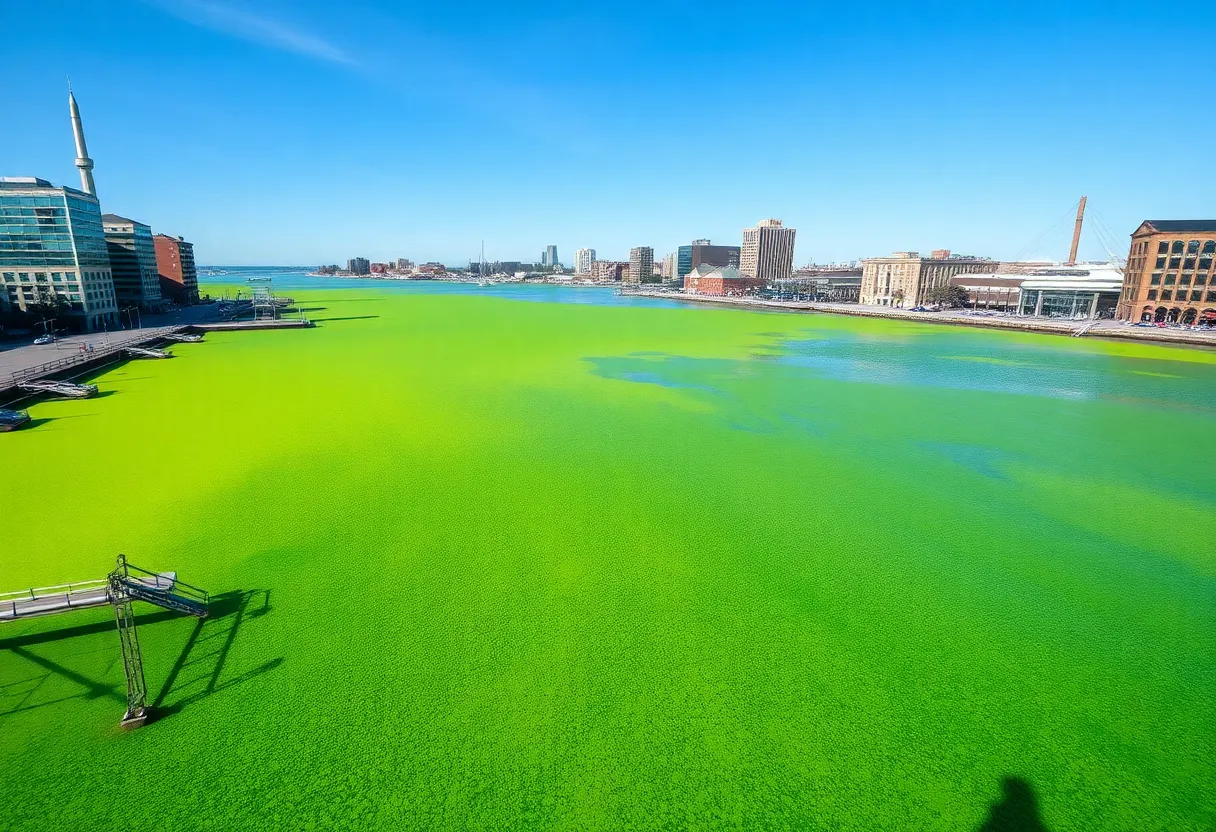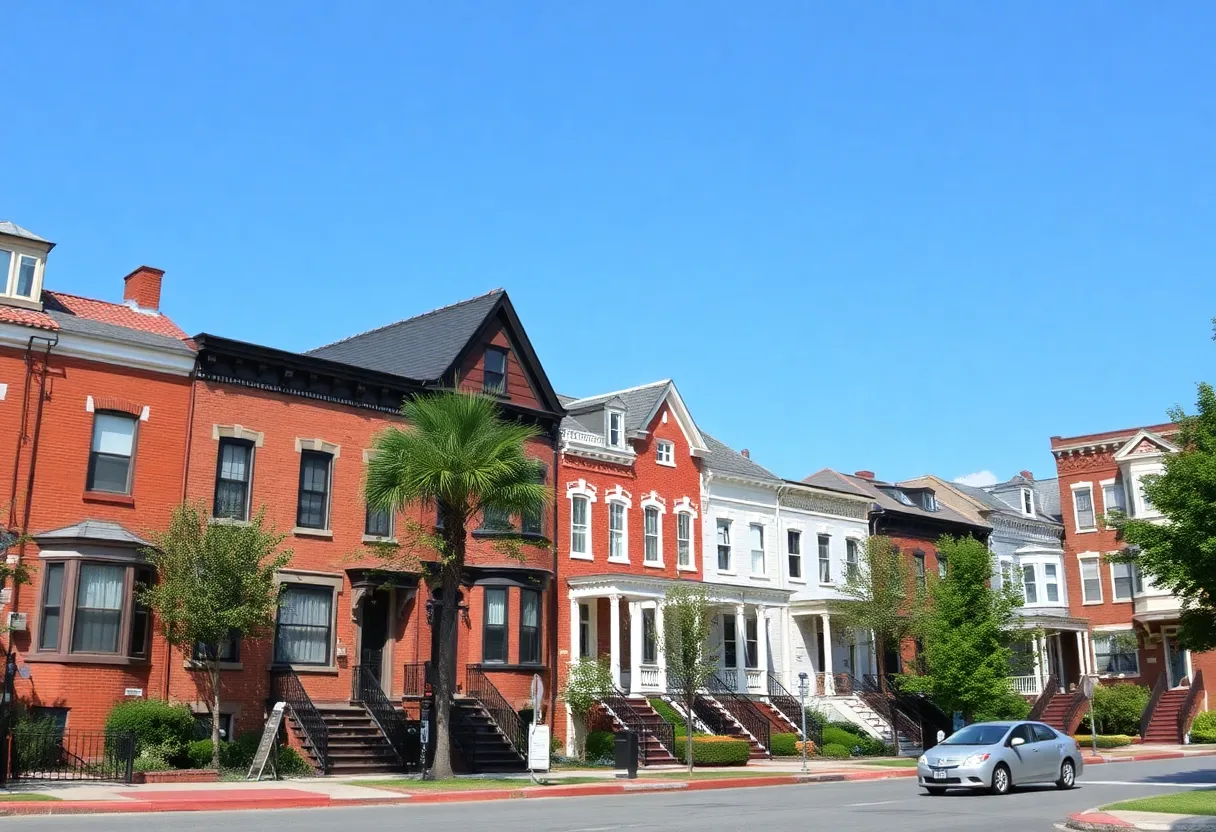News Summary
Baltimore’s Inner Harbor is currently experiencing a severe environmental crisis due to a prominent fluorescent green algae bloom, known as the “pistachio tide.” This troubling development has not only shocked residents and visitors but has also produced a strong odor causing discomfort. The Maryland Department of the Environment links this issue to low oxygen levels and nutrient runoff. With thousands of dead fish reported, residents are urged to report any further die-offs as experts emphasize the risks posed by harmful algal blooms.
Baltimore is currently grappling with a severe environmental crisis as a significant fluorescent green algae bloom, dubbed the “pistachio tide,” has enveloped its Inner Harbor. This alarming phenomenon, reported as the most severe in years, has not only horrified residents and visitors but has also generated nauseating odors that are detectable from blocks away. The stench has been described as a strange combination of sulfur, chemicals, and the smell of burning rubber mixed with hints of the sea and death.
The outbreak has raised concerns among locals, with many reporting that the odor is causing physical discomfort and nausea. Local water worker Roman Giordiano noted that the issue began nearly two months ago and has rapidly expanded since then.
The Maryland Department of the Environment (MDE) has linked the bloom and its associated odors to bacteria that flourish in low-oxygen water conditions. These conditions have been fuelled by nutrient inputs from stormwater runoff, which includes contributions from pet waste, failing septic systems, agricultural runoff, and issues arising from construction sites.
MDE has indicated that the warm weather may exacerbate the situation, potentially prolonging the unpleasant odors until a significant weather event occurs. In light of this, residents are being urged to report any observed fish die-offs to state authorities.
Estimates from MDE reveal that approximately 25,000 dead fish, predominantly menhaden, have been documented in the harbor, attributed to dangerously low dissolved oxygen levels. Investigations conducted by Blue Water Baltimore have suggested that a turnover event may also play a role in the fish deaths, where warm surface water pushes cooler, low-oxygen water from the depths into the upper water column. Furthermore, ongoing algal blooms are known to deplete oxygen levels in tandem with decaying algae.
Recent investigations have shown that while some areas have revealed elevated dissolved oxygen levels, the overall risk remains concerning due to the possibility of additional algae die-off. This environmental disaster comes on the heels of a previous incident where hundreds of dead crabs and fish were found in the harbor.
Experts from the National Aquarium have indicated that the cool nighttime temperatures contribute significantly to the drastic fluctuations in oxygen levels in the water, resulting in seasonal algae blooms. Additionally, another emergent phenomenon referred to as the “mahogany tide” has been observed. This brown algal bloom arises from nitrogen and phosphorus runoff combined with warm, dry conditions.
Officials have stressed the importance of public safety, informing residents that harmful algal blooms can pose risks to both people and wildlife. They have strongly advised against contact with contaminated bodies of water.
This environmental crisis underscores the complex challenges facing urban waterways, contributing to the need for ongoing monitoring and efficient water management to ensure the health of Baltimore’s Inner Harbor and its ecosystems.
Deeper Dive: News & Info About This Topic
HERE Resources
Environmental Crisis in Baltimore: 25,000 Dead Fish Found
Massive Fish Kill Discovered in Baltimore Harbor
Additional Resources
- MSN News: 25K Dead Fish Found in Baltimore Harbor
- Wikipedia: Algal Bloom
- WBAL TV: Dead Fish in Baltimore Harbor
- Google Search: Baltimore Harbor Environmental Crisis
- Fox Baltimore: Unusual Algae in Baltimore’s Inner Harbor
- Encyclopedia Britannica: Fish Kill
- CBS News: Access to Centennial Lake Suspended
- Google News: Pistachio Tide Baltimore

Author: STAFF HERE BALTIMORE WRITER
The BALTIMORE STAFF WRITER represents the experienced team at HEREBaltimore.com, your go-to source for actionable local news and information in Baltimore, Baltimore County, and beyond. Specializing in "news you can use," we cover essential topics like product reviews for personal and business needs, local business directories, politics, real estate trends, neighborhood insights, and state news affecting the area—with deep expertise drawn from years of dedicated reporting and strong community input, including local press releases and business updates. We deliver top reporting on high-value events such as the Baltimore Book Festival, Preakness Stakes, and Artscape. Our coverage extends to key organizations like the Baltimore Chamber of Commerce and Visit Baltimore, plus leading businesses in shipping and healthcare that power the local economy such as the Port of Baltimore and Johns Hopkins Medicine. As part of the broader HERE network, we provide comprehensive, credible insights into Maryland's dynamic landscape.





